NEWSTEAD
Rediscovering a hidden steam locomotive thought scrapped decades ago sounds like a work of fiction. But it’s true, and you’ll soon be able to travel behind it for the first time ever.
WORDS: MARK PEARCE
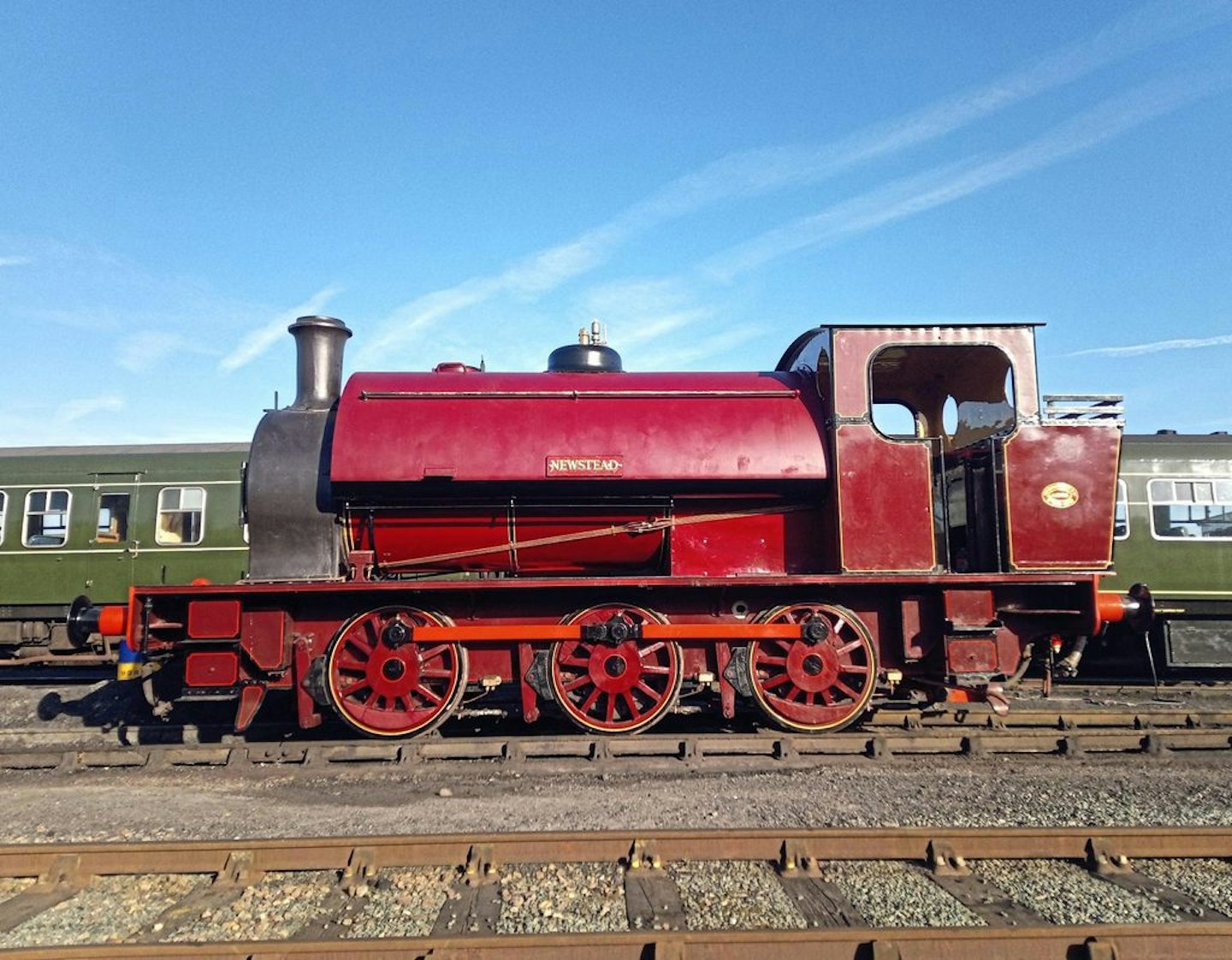
In March 2016, the Steam Railway office was in quiet disbelief. We often receive emails and phone calls with tip-offs or rumours of surprise discoveries. Sadly, most don’t turn into reality. So, when we were contacted by a gentleman looking to help his neighbour who had a steam locomotive hidden in a barn, we were a little sceptical. It must be a model, or a miniature, surely? How could a full-sized steam locomotive just disappear?
This time though, not only was it completely true, it was even more of a revelation than anyone could have imagined. Newstead was – and is – indeed a full-sized Hunslet 060ST, but it really hadn’t been seen or heard of for about quarter of a century. The enthusiast community assumed it had been scrapped and even the most informed considered its whereabouts a mystery.
The mystery made a lot more sense when it was revealed that, most staggeringly of all, Newstead wasn’t just tucked in the corner of any old barn… it was in a Hertfordshire convent.
The revelation came to light in early 2016 because after decades of solitary reflection, Newstead needed a new home. Around the same time as Steam Railway broke the story, then Nene Valley Railway locomotive crewman Alex Alder also got the tip-off.
“The word everyone was saying was ‘amazing’ – it was a really strange sort of situation. It was like a barn find, covered in a layer of dust and that’s the only information we could get,” says Alex.
“We met this guy who was a caretaker of a Catholic school. We were in the car and suddenly this red-brick old English country mansion appeared. Sure enough, there were nuns inside and we were directed by Mother Superior. We had tea and biscuits, but I thoroughly expected to find a 7¼in model still.
“We all squeezed through a little door and when everyone moved out of the way I was right up against a buffer and sure enough there it was. It was incredible. That moment when we saw the engine, we thought who, how?”
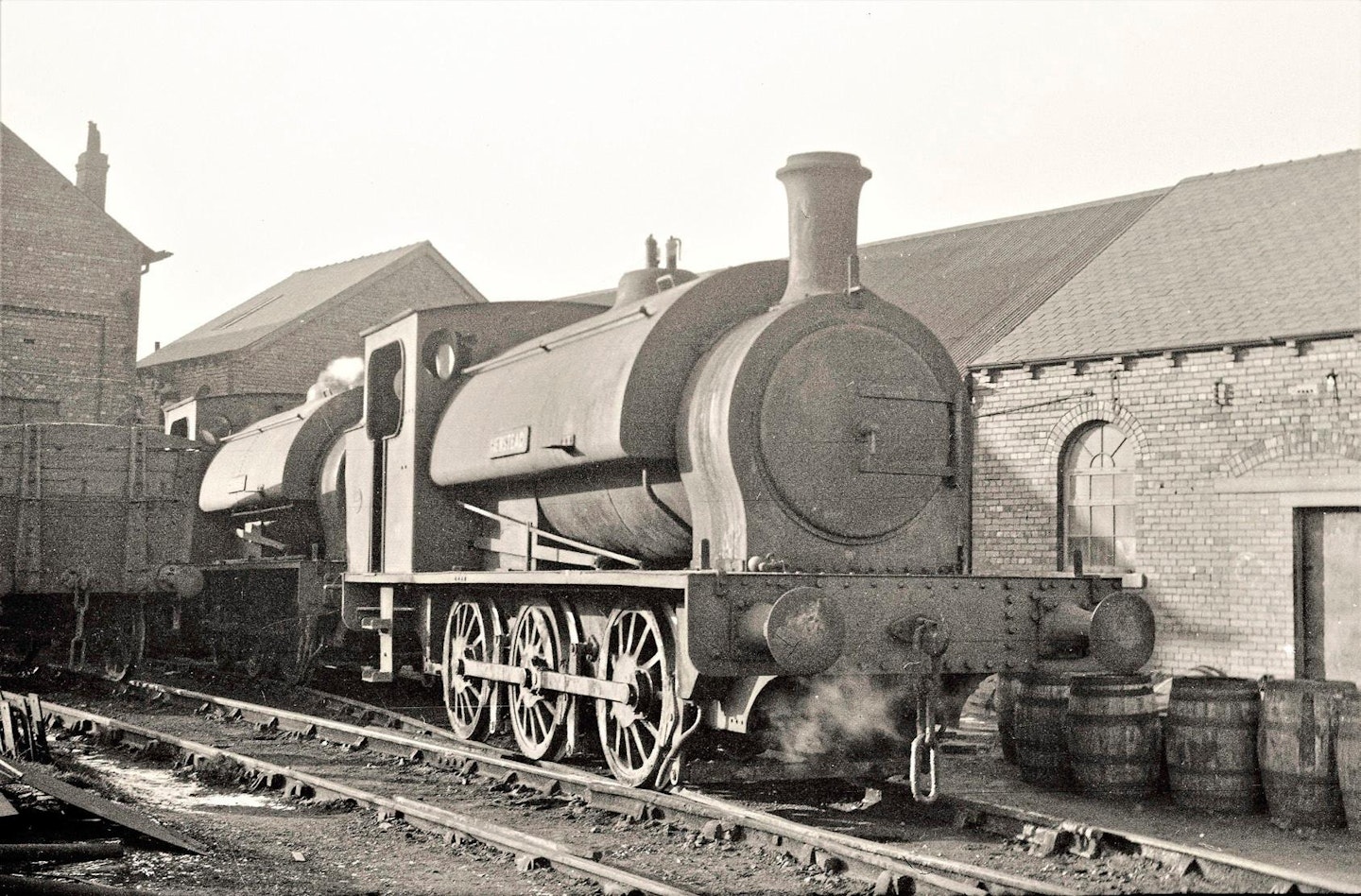
Newstead****’s saviour(s)
The saviour of Newstead was Malcolm Saul, an enthusiast and collector who also quietly owned vintage road vehicles. Apparently, Mr Saul took some pride in his ability to conceal a 38-ton steam locomotive though.
Mr Saul bought the Hunslet 060ST straight from the National Coal Board in 1973. It had been built as Hunslet Works No. 1589 for Hemsworth Colliery in West Yorkshire during 1929 and worked in the coal industry for its entire career. But he didn’t just acquire Newstead, he put a significant amount of effort into his locomotive. He paid for restoration and a full overhaul to working condition to be carried out.
“He cared for the engine really well,” Alex continues. “It was in a shed, dry and undercover. When I saw the engine and met his widow Jane, I felt immense gratitude for his looking after Newstead, and I wanted to continue that legacy.” Alex’s desire to find Newstead a new home and get it back into working condition was also driven by another experience, with a completely different locomotive…
“When you say Hunslet everyone thinks ‘Austerity’,” Alex says. “Everyone’s driven one. They’re powerful, rugged and will do the job. They’re a good choice for running. But even though they’re comparable to a ‘57XX’ or a ‘Jinty’, they’re not as free running. They’ve got the power and ruggedness, steaming, water capacity; but not quite as free running.”
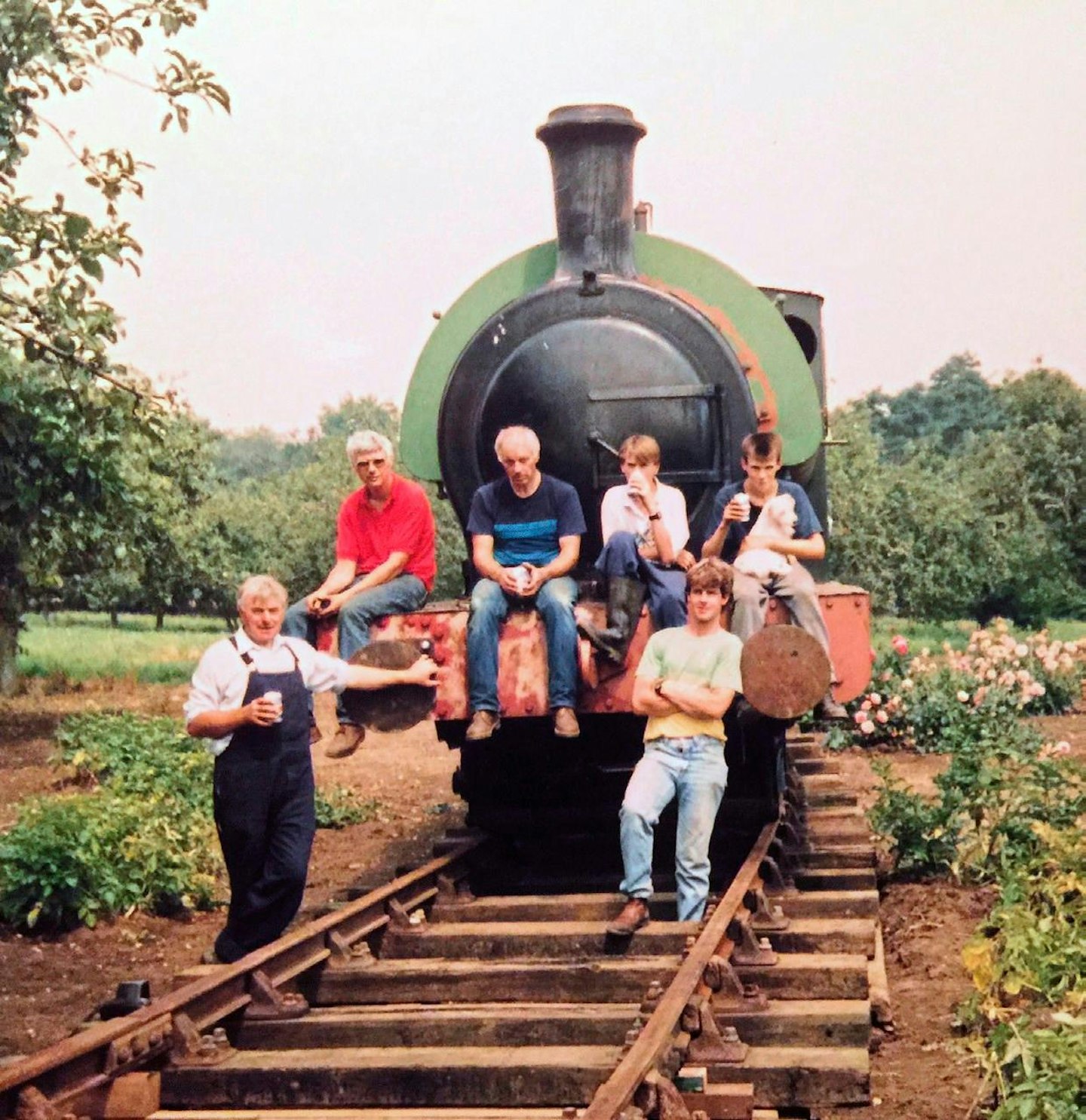
During his time on the footplate at the Nene Valley, Alex got to crew Newstead’s classmate, Ring Haw, when it was visiting from the North Norfolk Railway. It’s not an ‘Austerity’, but a 16in-cylindered Hunslet 060ST that, to the casual observer, looks very much like an ‘Austerity’ with a short tank.
“When I saw Ring Haw, I thought ‘same construction, smaller wheels, smaller saddle tank, smaller bunker’. I thought ‘Austerities’ are slow, we’re going to get even slower,’ Alex confesses. “But when I got on the regulator of Ring Haw and left with the first train, I did what I would do on an ‘Austerity’ and suddenly you have to notch back, it was so free running, and it was love at first sight.”
“Ring Haw on a six-coach train accelerates faster than a big loco, but you can hear it work and it’s the best noise. It’s a really fun engine. One of my favourite engines.”
“When I saw Newstead, I knew I wasn’t just looking at a small ‘Austerity’; I knew what it was capable of. If I hadn’t had the pleasure of driving Ring Haw I wouldn’t have bought the engine. I’m fortunate I knew what it was.”
Buying Newstead though turned out to be a lot easier than taking it ‘home.’ When it was described as being ‘tucked away’ in a convent, that’s probably a bit of an understatement.

Extracting Newstead from its home of more than 40 years was very challenging. It almost comes as no surprise to learn that it had arrived through a neighbouring farm. Mr Saul brought Newstead by road as far as a concrete farmyard. He had the low-loader reversed right up to the convent boundary then built a tightly curved temporary track to the building that became Newstead’s shed.
But since the arrival, trees had been planted where the access once was. Now they were fully grown, and the nuns of the convent definitely did not want to see them taken down. The only other route was along a very narrow path.
“A Land Rover would just fit down,” Alex says. “But we decided that there was just enough room for a lorry. But the ground was soft – the trailer went in and immediately got bogged down. We spent three hours getting it out empty, then wondered what to do next.”
The team involved in the rehoming demolished a gatepost and managed to drag the trailer up to the locomotive using an excavator and a tractor. But that chewed up the lawn and turned the area into a mud bath. Getting Newstead out the same way was clearly going to be impossible.
Instead, Malcolm Saul’s methods of 43 years earlier provided the inspiration. Using three panels of track, Newstead was slewed around through an almost three-point turn. Then laying a panel at a time in front of the locomotive, it was down the path in a relatively straight line, before another slewing operation got it to the right direction for the low-loader.
“Suddenly it was winched onto the trailer – that was the easiest thing in the world having done all that,” Alex remembers.
The whole operation took two days and was only made possible thanks to the tenacity of the road haulier. Finally, Newstead was ready to depart for the next chapter; a couple of nuns even came out to wave a teary goodbye in their habits.
“I’ve always been amazed by stories of people who bought a locomotive direct from British Railways or the National Coal Board,” says Alex. “And Newstead was as far removed from that as possible!”
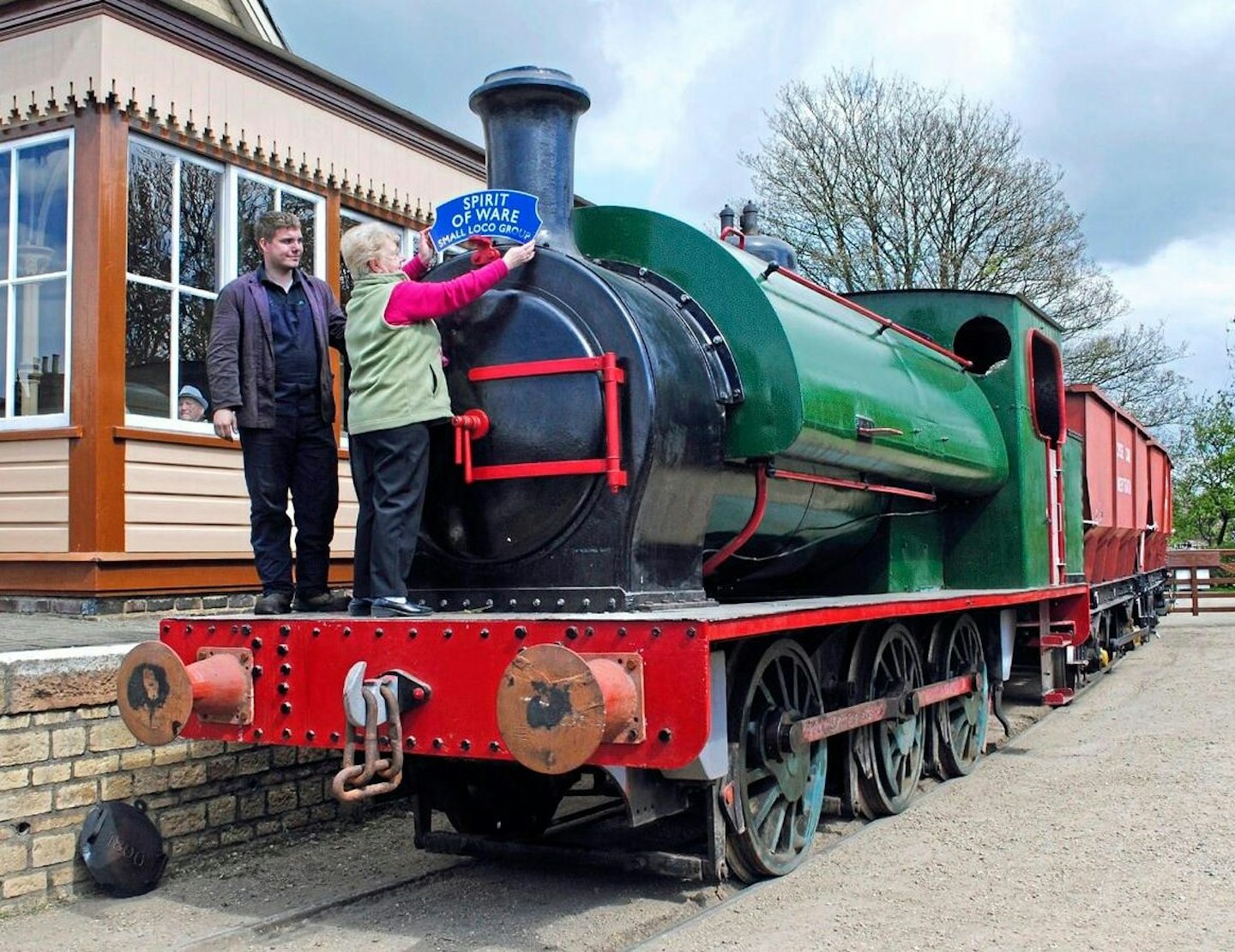
Helping hands
The destination for Newstead was, unsurprisingly, the Nene Valley Railway. The plan was to carry out an assessment for a full return to traffic. After the care and attention lavished on Newstead by its previous owner, Alex and his team knew that the locomotive was basically in good shape, but would need some work. The big job that was known about was replacing the firebox crown stays, and obviously a full re-tube would be required too. But it soon became apparent that carrying out a full overhaul was the only way forward.
The Nene Valley was already heavily committed to a number of overhauls and therefore it was reluctantly time for another new home.
“I drafted an email that basically said, ‘Hello, I’ve got an engine, can I come and overhaul it?’,” jokes Alex. “A number of railways were pretty keen. But it felt to me that the Spa Valley Railway was the right option.
“I was invited to a members’ fish and chips train, it felt jolly, like a family community. It felt like the right size of engine, and the railway knew what an overhaul was like.”
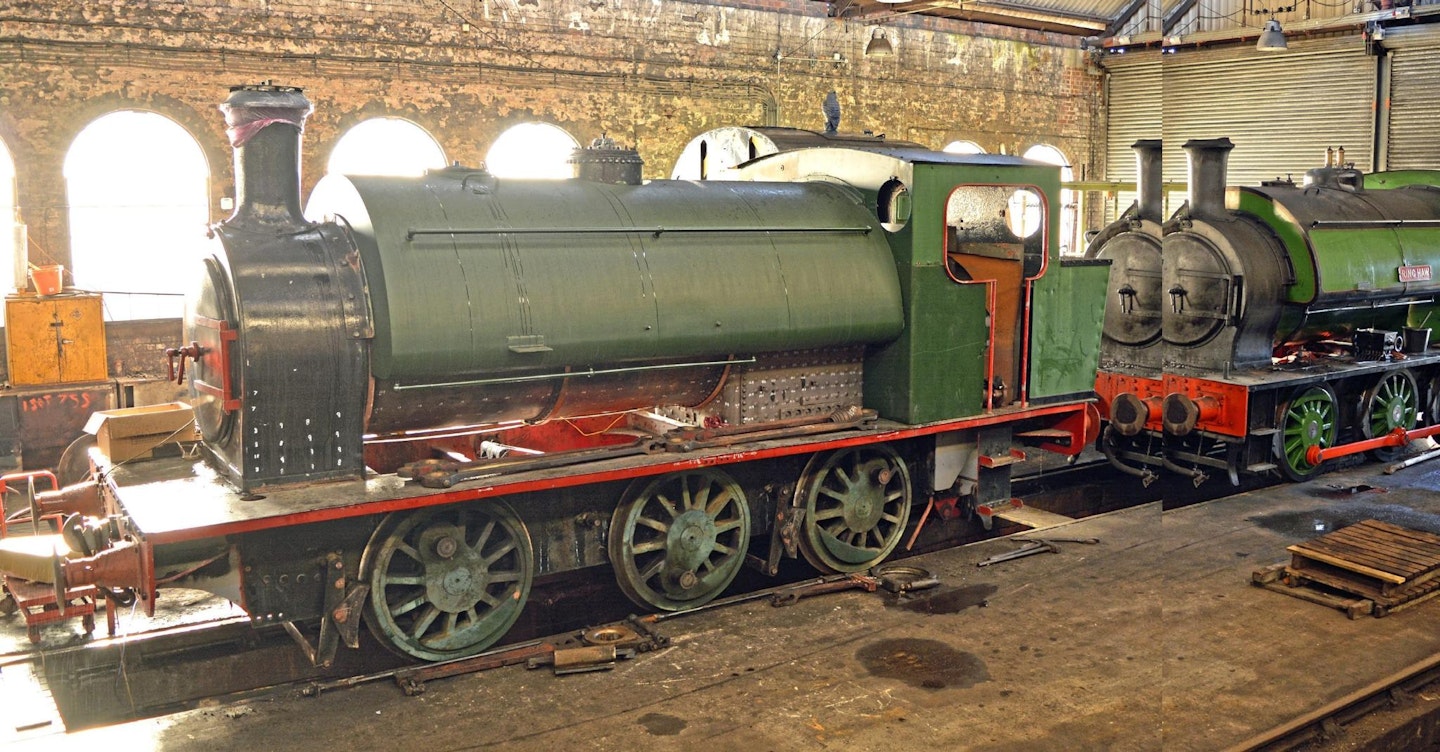
So, Newstead was loosely reassembled for the journey from Wansford to Tunbridge Wells. Accompanied by a van of ‘bits’, the journey was thankfully much smoother than the previous move by road.
Safely ensconced in the shed at Tunbridge Wells West, the overhaul of Newstead could begin in earnest. It was also at this point that the focus shifted from simply getting the Hunslet-built machine back in steam, to producing a high-quality overhaul that would result in a locomotive fit for many years of service.
“When you take something apart, you know it works, but you don’t know if it will last for 10, 20 or 30 years,” Alex observes. “So, do you just put it back together, or do it to last?
“When we initially looked at Newstead at the Nene Valley, we measured the cylinder bores – they had only 14 thou’ of wear. We thought we’d done good. But it turned out that a cylinder rebore was about the only thing we didn’t do!”
As an example of the approach, the horn blocks were taken off the chassis and replaced because they were worn. All the axleboxes have had new bronze bearings fitted with white metal wearing surfaces too. The years of good care at the convent paid dividends as everything came apart easily – in direct contrast to many an overhaul.
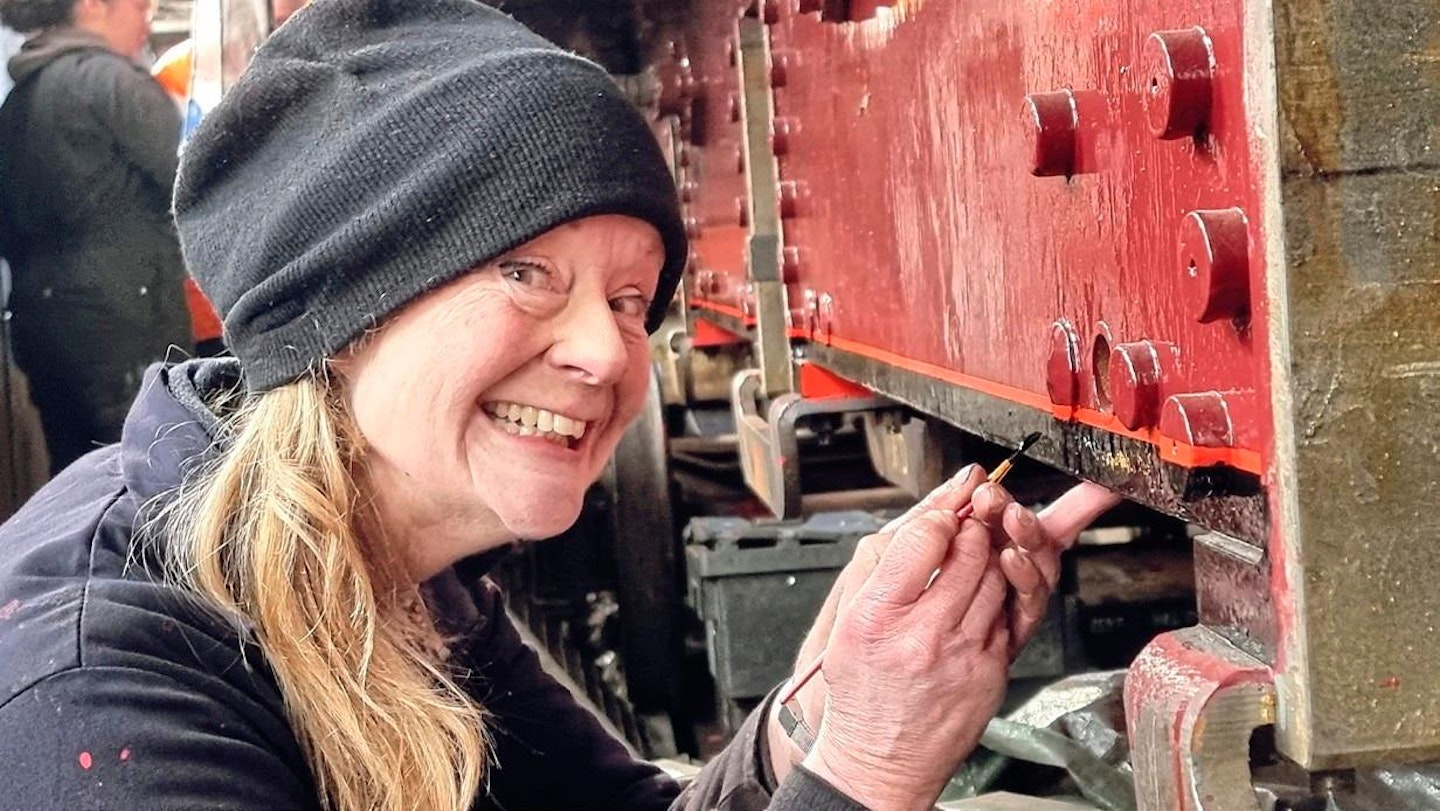
The biggest challenge though, Alex thinks, was the sheer size of the mountain that needs to be climbed during a locomotive overhaul: “It keeps getting bigger. It felt like each part of the mountain you’ve climbed before. You’ve done machining, you’ve done bits of boiler work, you’ve done paintwork… you can see the pebbles on the beach, but you don’t realise how many pebbles they are until you do an overhaul.”
The support Alex has received from others in the sector has undoubtedly helped with scaling that mountain and counting those pebbles. John Beesley, the owner of sister 16in Hunslet 060ST Beatrice, is singled out for specific thanks.
“John Beesley has been really helpful. He’s owned one of these for decades, he’s run it overhauled it and he’s still running it. He’s got a lot of experience,” Alex says.
“One of the lovely things about railway preservation is that in most fields if you ask how someone has done it you get a pretty sharp response ending with ‘off’. In heritage railways, people want to say ‘here’s a good tip’, or ‘have you tried speaking to these guys?’ John has been helpful with patterns castings, and knows a few tricks.”
“I’m thankful for the enormous generosity of all the people who’ve worked on it. There are far too many to mention but I hope everyone can take some pride in those achievements.”
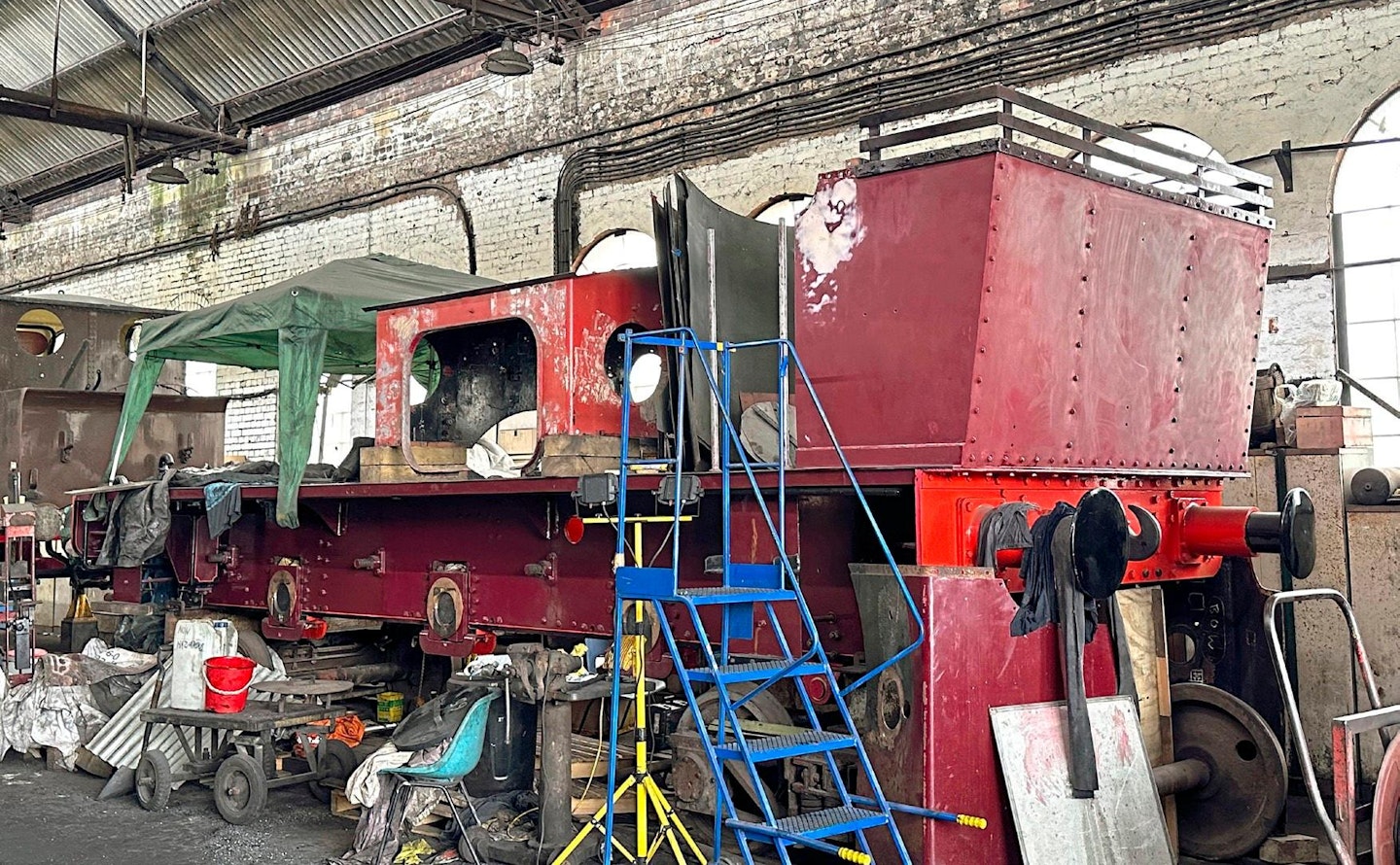
The finishing line
During 2024, Newstead’s coupling rods and eccentric straps were machined, new big end bearings fitted, injectors overhauled and a huge amount of painting was completed. The livery, by the way, is LMS crimson with Naples yellow lining – as carried by Newstead during its colliery career and a sharp contrast to the green it was in while at the convent.
The boiler overhaul was also finished and tested in December 2024. By February 2025, the boiler of Newstead was placed back into the frames. The tank and cab were lowered back on shortly afterwards.
The original nameplates from Newstead also recently turned up. Alex has only been able to find one photo from 1954/55 that shows the original nameplates fitted. Understandably, he thought they’d been scrapped long ago. But after 70 years without nameplates, Newstead can once again proudly carry the name.
With the overhaul rapidly approaching a conclusion, thoughts turned to operation. In the years Newstead has been at the Spa Valley, the line has grown enormously. Passenger numbers have increased significantly and the line now regularly turns out a Bulleid ‘Pacific’ to haul trains – whereas an industrial 060ST was common when Newstead arrived. As opportunities for steaming would clearly be limited, Alex needed to find an alternative home again.
“The Spa Valley have been immensely generous,” says Alex. “They have given the engine dry cover and facilities for over six years. At the end of the day, the railway has grown so much that it feels it can’t make best use of the engine.
“I wrote a list and I thought there were many railways would benefit from the engine. There was a lot of interest. Everywhere from Devon to Yorkshire, someone was interested in it – which felt really nice. But the recurring theme here is ‘blame it on Ring Haw!’”
In early March 2025, Newstead moved to the North Norfolk Railway to be with her sister. Alex has high hopes that test runs will happen during April before Newstead enters regular traffic on the North Norfolk
“I’m putting all the energy I can into get it going,” says Alex. “I want to provide an engine that people love to crew and get a lot of pleasure out of driving and firing it. We’ve had a wonderful reception at the North Norfolk. Everyone has been so accommodating – they’ve really helped speed the overhaul up while in Norfolk.”
Within weeks of arrival, the last of the machining work required before Newstead could be considered complete was finished. Work had turned to setting the valve timing before March was over and all was set fair for the first moves under its own steam since the 1990s. If there are no nasty surprises, that’ll be followed by Newstead’s first appearance on a public train ever.
Alex is, of course, excited at the prospect of Ring Haw and Newstead double-heading. But he’d also love to see Newstead at other lines, as a roving ambassador for the NNR “so other railways can see what a good engine a 16in Hunslet is!”
If you’re as enthusiastic about 16in Hunslets as Alex, or perhaps even if you’re willing to be converted, then keep an eye on the North Norfolk Railway. When? “I’m an optimist,” smiles Alex. “So, I’m hoping to have it in traffic during April if all goes well.”
Each issue of Steam Railway delivers a wealth of information that spans the past, present and future of our beloved railways. Featuring stunning photography, exclusive stories and expert analysis, Steam Railway is a collector's item for every railway enthusiast.
Choose the right subscription for you and get instant digital access to the latest issue.

